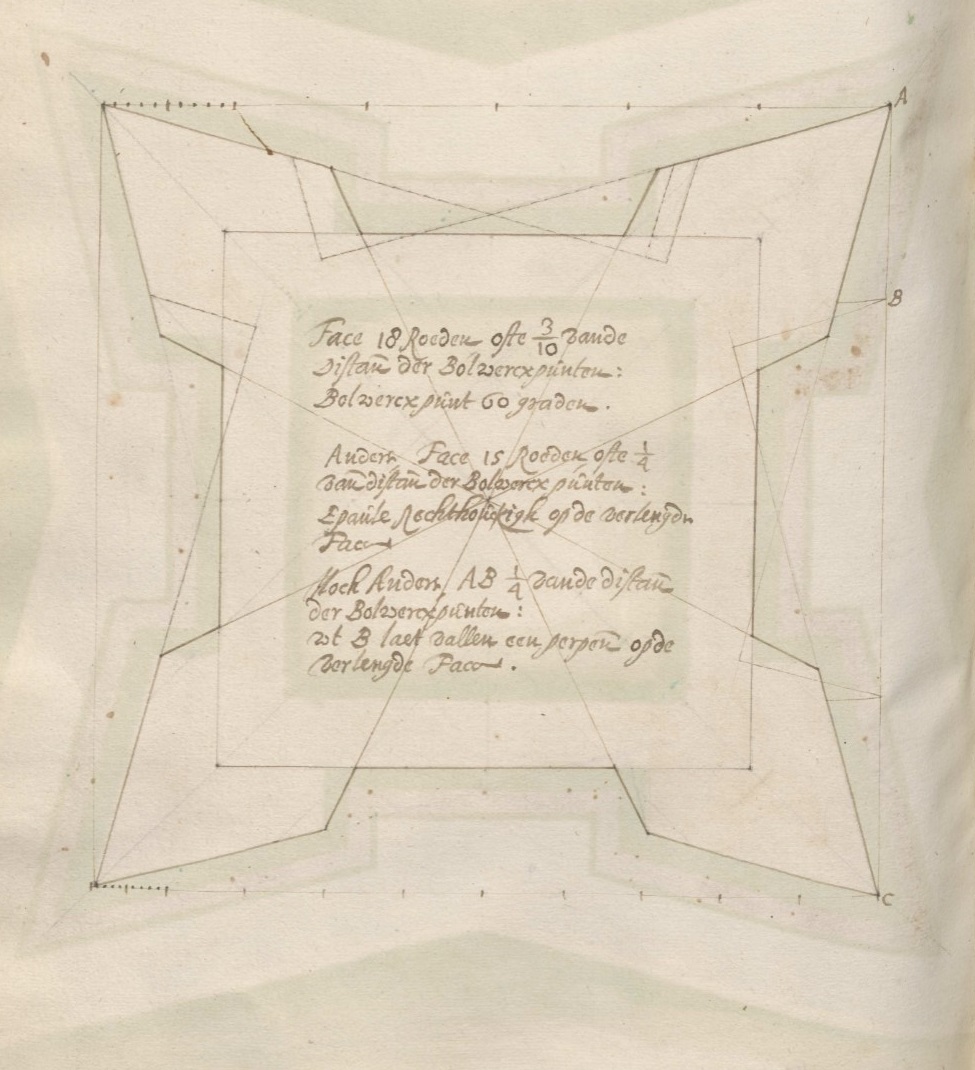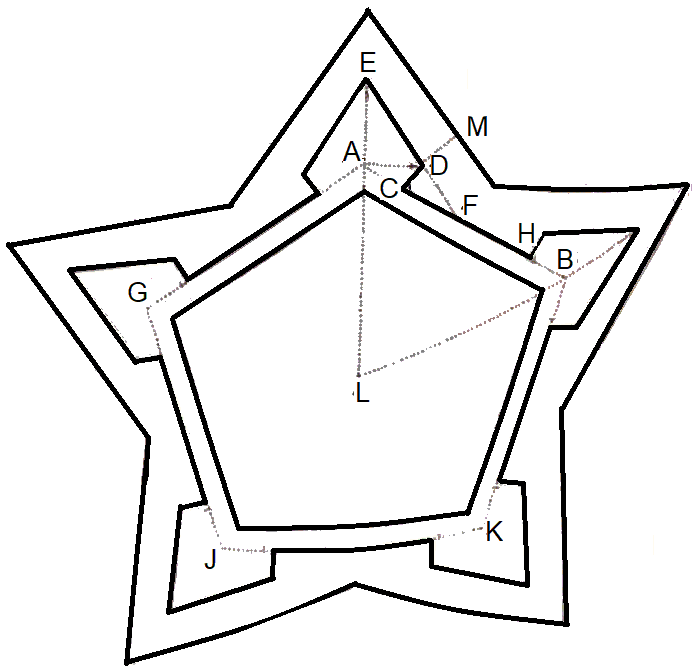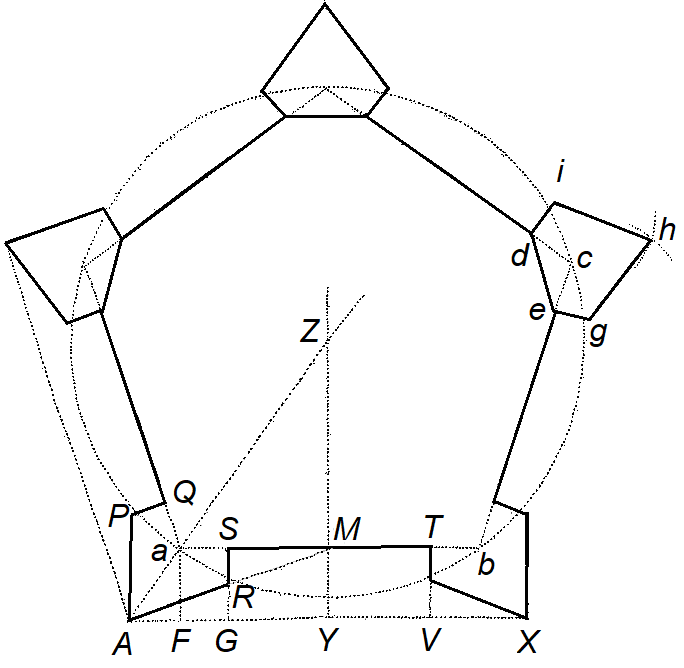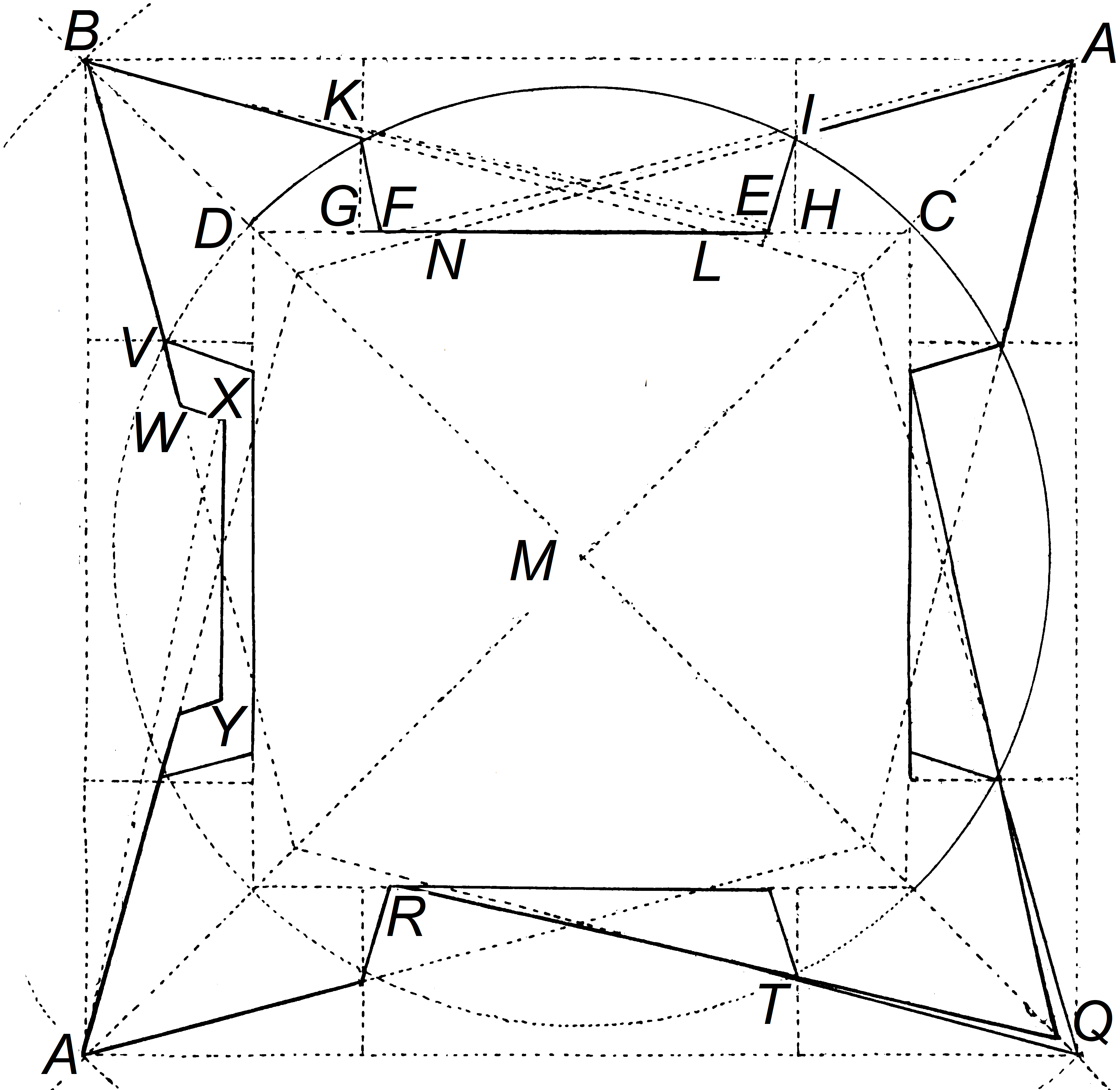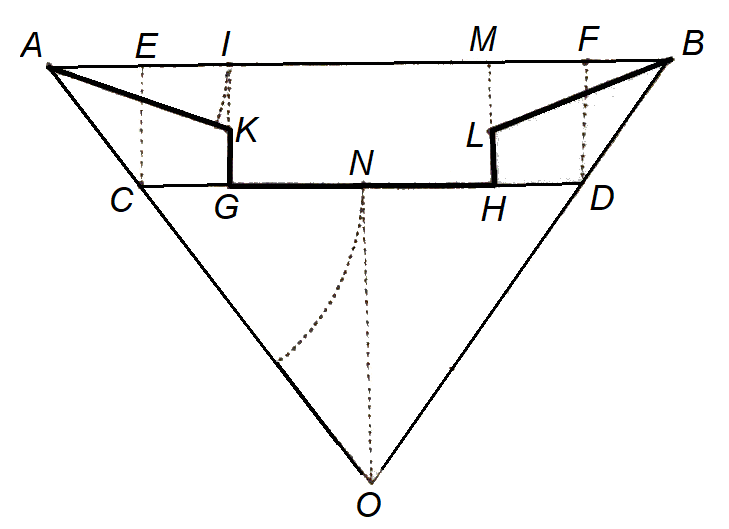In Stevin's hexagonal design, the distance between the points of the two bastions is 1237 feet (about 100 rods or 3800 meters). The bastion angle is obtuse. The length of the line of defense is 968 feet (about 81 rods or 300 meters). This design is larger than a Great Royal. |
 |
| Simon Stevin: Sterctenbovwing 1594 |





